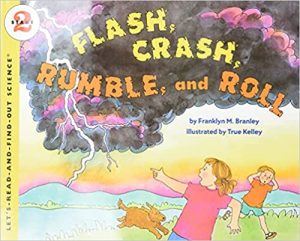You will select a grade from K-6 and develop an annotated bibliography of books, digital resources, and teacher materials for use in instruction. Books selected must come from a variety of genres, nonfiction kinds, and span a range of reading levels. The bibliography will be created in Google sites and must contain the following components. Note that these components will appear on different pages in your site.
Home Page – This is the landing page for your site. You should explain what can be found on the site and how to navigate it. Be sure to indicate the grade level and topic for your bibliography either on this page or in the header or title for your site. You should also provide basic author information.
Overview – Using the Standards of Learning as a guide, provide an overview of the main topics of instruction for your chosen grade level. (You will find the introductory paragraph in the standards helpful here.) Include a copy of the standards and the curriculum framework information. You can include these as linked files.
Books by Strand (Will include multiple pages) – In the elementary grades you will find the standards grouped by strand. This means you will need a separate page for each strand. On each page you will share an annotated list of titles that will be useful in supporting instruction for the topics in the strand. You must have at least 4 books per strand, with a minimum of 25 books across all strands. In the file linked below, you will find a list of strands and topics for each grade.
The books you select should be written specifically for KIDS. Do NOT select books that are out of print. The list must include varied genres including nonfiction, fiction, poetry, and biography. On each strand page order the books alphabetically by author as per APA guidelines.
Each entry must include a cover image, a link to the book at a publisher or seller website, a reference in APA format, book summary (annotation) written in your own words, a suggestion regarding how the book might be used, and an SOL connection. Here is an example:
Flash, Crash, Rumble, and Roll by Franklyn M. Branley
 Branley, F. M. (1999). Flash, crash, rumble, and roll: A let’s-read-and-find-out science
Branley, F. M. (1999). Flash, crash, rumble, and roll: A let’s-read-and-find-out science
book (T. Kelley, Illus.). HarperCollins.
Simplistic but colorful illustrations show a family picnicking when a storm rolls in. Then, the illustrations look more like charts or diagrams as arrows are used to explain how clouds build up into thunderheads. A resources page in the back suggests hands-on activities and websites that provide more information. I like that this book explains the storm cycle in detail, but uses language students can understand. This would be a good read-aloud title during instruction on thunderstorms. (2.6)
Here is a helpful resource for APA format for children’s books or other illustrated references.
Here is a general resource for APA format.
Digital Resources – Provide an annotated list of at least 5 videos, websites, or apps that you feel are “MUST USE” resources for this grade level. (Do NOT select subscription resources that require paid accounts, such as BrainPop.) Be sure to include a screenshot (if appropriate). Here is an example:
SciShow Kids is a YouTube series that contains a range of videos appropriate for elementary students. The videos are kid-friendly and present science concepts in clear and meaningful ways.
https://www.youtube.com/user/scishowkids/
Teacher Materials – Provide an annotated list of at least 5 resources that will not be used with students, but rather will provide teachers with background information, scientific explanations, and/or instructional ideas. Be sure to include a screenshot or cover image and link to the resource.
